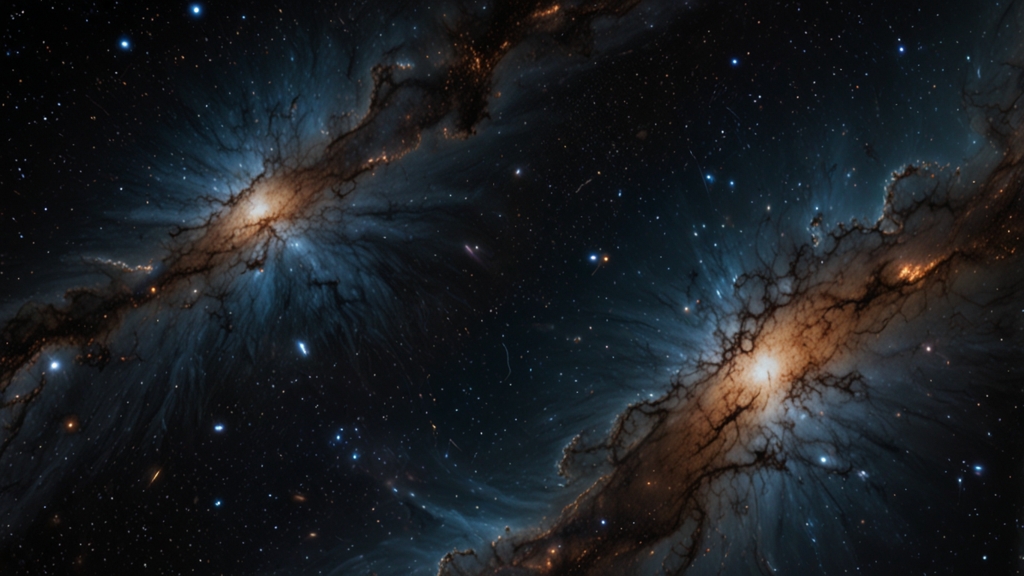The Unseen Forces of the Universe: What Lies Beneath
The universe is a vast, intricate tapestry woven from countless threads of matter and energy. While the visible cosmos—stars, planets, and galaxies—is a spectacle to behold, much of what constitutes our universe remains hidden from our eyes. These unseen forces and elements, though elusive, play a critical role in shaping the fabric of reality. In this article, we will delve into the mysterious world of dark matter, dark energy, and other invisible influences that govern the cosmos.
Dark Matter: An Enigmatic Presence
Dark matter is one of the most compelling mysteries in modern astrophysics. Despite its name, dark matter is not 'dark' in the conventional sense; it neither emits nor absorbs light, making it entirely invisible to current detection methods. However, its existence is inferred through its gravitational effects on visible matter.
Researchers estimate that dark matter constitutes approximately 27% of the universe's total mass-energy content, dwarfing the mere 5% composed of ordinary matter. But what exactly is dark matter? Scientists have proposed several candidates, including Weakly Interacting Massive Particles (WIMPs) and axions. Efforts to directly detect these particles are ongoing, with experiments like the Large Hadron Collider and underground detectors offering promising avenues for discovery.
Dark Energy: The Accelerating Force
Complementing the intrigue of dark matter is dark energy, an even more mysterious entity. Dark energy is hypothesized to be responsible for the accelerated expansion of the universe, a phenomenon first observed in the late 20th century. Constituting approximately 68% of the universe's total mass-energy content, dark energy is the dominant force in the cosmos.
One prevailing theory suggests that dark energy could be a property of space itself, related to the cosmological constant introduced by Albert Einstein. Another proposition involves scalar fields that evolve over time, adapting the behavior of dark energy. While the true nature of dark energy remains elusive, its impact on the cosmos is undeniable.
Gravity: The Invisible Architect
Gravity, while not unseen, operates in such subtle ways that its profound influence is often underappreciated. This fundamental force governs the motion of celestial bodies, the structure of galaxies, and the dynamics of the universe itself. Einstein's General Theory of Relativity redefined gravity as the curvature of spacetime caused by the presence of mass and energy, providing a framework to understand phenomena such as black holes and gravitational waves.
"...spacetime tells matter how to move; matter tells spacetime how to curve." — John Archibald Wheeler
Gravitational waves, ripples in the fabric of spacetime caused by catastrophic events like colliding black holes, offer new ways to observe the cosmos. The detection of these waves by observatories such as LIGO and Virgo has opened an additional 'window' to the universe, complementing traditional electromagnetic observations.
Neutrinos: Ghostly Particles
Neutrinos, often dubbed as 'ghost particles', are another example of unseen forces at play. These nearly massless particles interact so weakly with matter that trillions pass through our bodies every second without leaving a trace. Neutrinos arise from nuclear reactions in stars, supernovae, and even the Big Bang, providing critical clues to the processes that govern the universe.
"Neutrinos are a gift from the stars, revealing the inner workings of the cosmos." — Unknown
Conclusion: Embracing the Unknown
The unseen forces of the universe—dark matter, dark energy, gravity, and neutrinos—represent the cutting edge of astronomical and physical research. While we have made significant strides in understanding these enigmatic entities, many questions remain unanswered. As our technological capabilities advance, so too will our ability to uncover the secrets that lie beneath the surface of the visible cosmos.
In the words of Carl Sagan, "Somewhere, something incredible is waiting to be known." The pursuit of knowledge surrounding the unseen forces of the universe continues to inspire awe and curiosity, driving humanity to explore the cosmos and our place within it.









